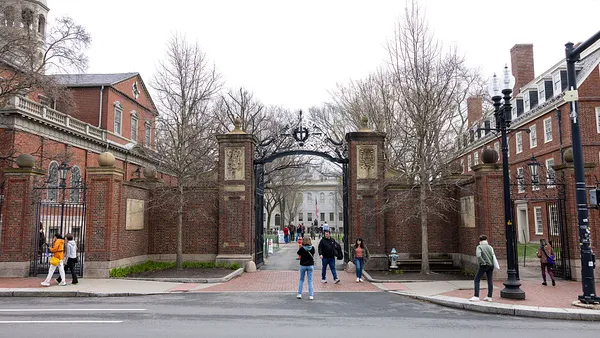Dive Brief:
- Changing demographics, wide-ranging competition and shifting funding sources are together forcing higher education to adapt. Offering more online courses and vocational training are typical responses, but they're not the only ways to bolster public institutions, argues a new report from Deloitte's Center for Higher Education Excellence and Georgia Tech's Center for 21st Century Universities.
- The pair suggests five approaches public institutions can take in response. Those include sharing resources among campuses, aligning with the state's economic needs, offering more lifelong learning opportunities and partnering with the private sector.
- However, change is needed in order to execute these models effectively, including a shift to student-centered decision-making, updated financial models and stronger state education leadership.
Dive Insight:
The report spotlights several existing programs as examples for the five models it recommends. Among them is the competency-based education (CBE) program at nonprofit Western Governors University, which benefits from being offered entirely online. Mastery of industry-relevant skills, rather than the duration of a semester, is the measure of completion, something the authors cite as a feature of colleges that meet students' needs and states' economic needs and are dubbed in the report as the "Entrepreneurial University."
Other colleges might benefit from pivoting to offer intensive student learning experiences, a feature of the so-called "Experiential University." The report cites the University of Cincinnati's Experience-Based Learning and Career Education program and Georgia Tech's Center for Career Discovery and Development (C2D2) program as examples of effective ways to give students a better understanding of their prospective field of work and to let employers evaluate prospects. Similar co-op programs are offered by Drexel University, Northeastern University and the Rochester Institute of Technology, Kiplinger reports.
A common theme throughout the report is resource efficiency, such as by sharing resources among system campuses or working with the private sector to develop curriculum or fund projects. With state funding dwindling and little promise of a return to pre-recession levels, that creativity is necessary.
One example of that creativity can be found in how universities are funding campus expansion projects. The Chronicle of Higher Education notes that several are turning to public-private partnerships (P3s) to fund construction and maintenance. The model, popular among transportation and infrastructure projects, is expected to become a consideration for more institutions that need to expand and renovate to stay competitive.
Among the most high-profile P3s, the University of California, Merced is underway with a $1.3 billion expansion to double the size of its campus. The university will own the buildings but has tied performance to the rate they'll pay the private developer to maintain them for the contract's 39-year term.












